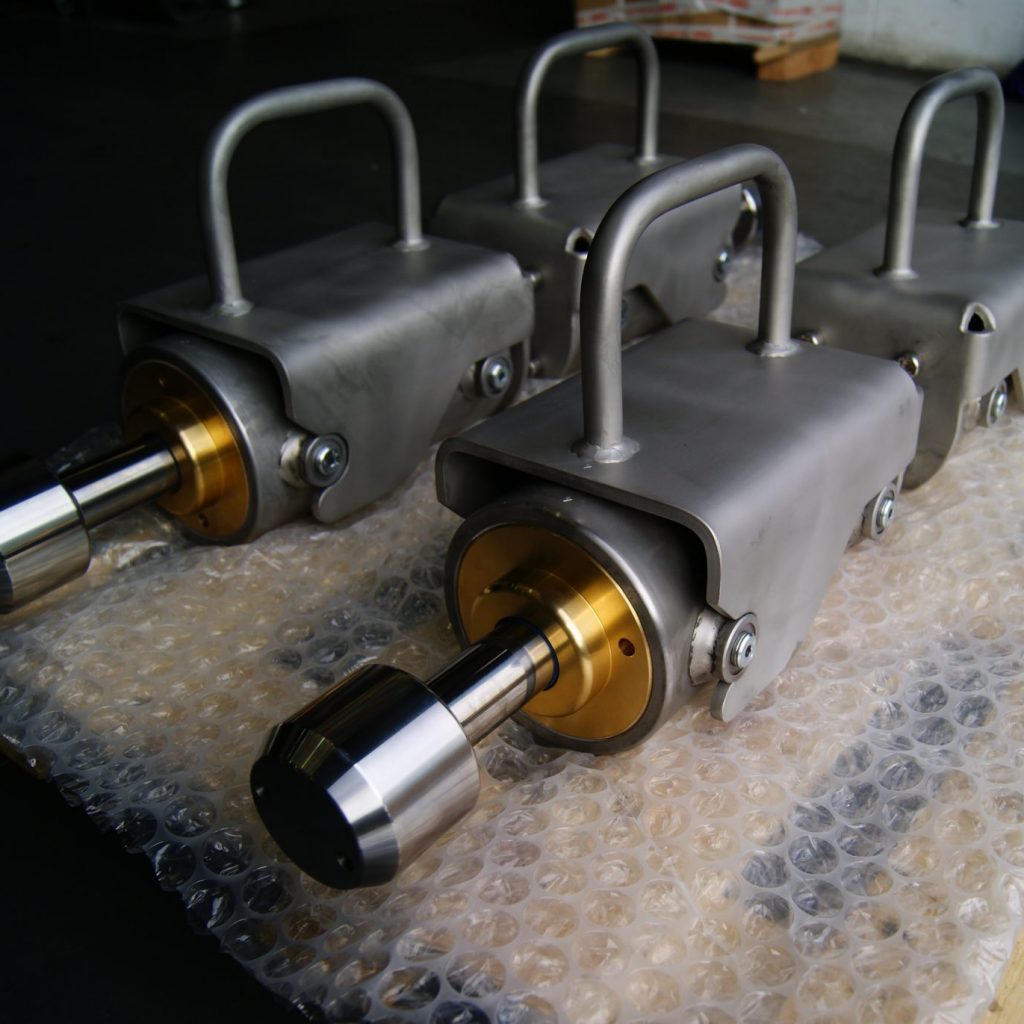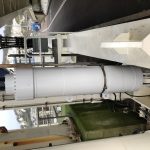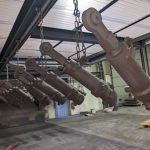Apex Hydraulics was recently commissioned to repair some of the largest cylinders they have ever worked on with a weight of approximately 17 tonnes each.
The cylinders were part of a linkspan; which stands on the edge of a port, lifting a road between the harbour berth and the ferry height. This particular linkspan was at the larger end of scale; almost twice the size of standard linkspans. Although the cylinders were still functional, they were reaching the age where the customer decided they needed some work as part of the routine dock maintenance.
Apex Hydraulics is very familiar with working on linkspan cylinders and has repaired linkspan cylinders from ports all around United Kingdom and beyond. However, this cylinder posed an additional challenge for the Apex team.
An unusual construction
Originally manufactured and installed in 1984, this cylinder had an unusual design that is rarely seen on such large cylinders. This design oversight made the project one of the most challenging cylinders to take apart that Apex has dealt with to date. Most hydraulic cylinders of this size would be of a bolted construction. To disassemble the cylinder, tools would be used to unscrew the bolts, allowing the cylinder to be lifted apart.
However, in this case, the design included a screw fixture, so the neck gland and base end had to be unscrewed from the cylinder tube. As the cylinder had been working portside for 37 years, the disassembly of these components proved extremely difficult. To strip it down, the cylinder had to be unscrewed, applying an even rotation – however, the cylinder was a massive weight and in addition to this, had rusted in place, making taking it apart next-to impossible.
Most hydraulic cylinder manufacturers would not have attempted the process and would have told the customer that the cylinder was not repairable. However, Apex Hydraulics applied some innovative thinking and used equipment in unconventional ways to achieve the impractical.
A unique strip, assessment and repair
To take the cylinder apart, the tube was heated up to make the metal expand enough to slacken it slightly and then heavy-duty lifting equipment such as cranes and forklift trucks were used to unscrew the heavy cylinder.
It took 6 people a full week to safely strip down the cylinder, before assessing, repairing and reassembling could begin. It required new seals, new valves and new pipe work. The entire cylinder was shot blasted to be completely clean and the rod was re-chromed.
Reassembly was again a challenging enterprise, with large powered welding rollers rotating the tube while the neck gland was threaded back into place.
The cylinder was then tested and inspected, ready again for another several decades of port-side work.
Related Products
The following products were utilised as part of this project. For more detailed information on these products, click on an image below…







